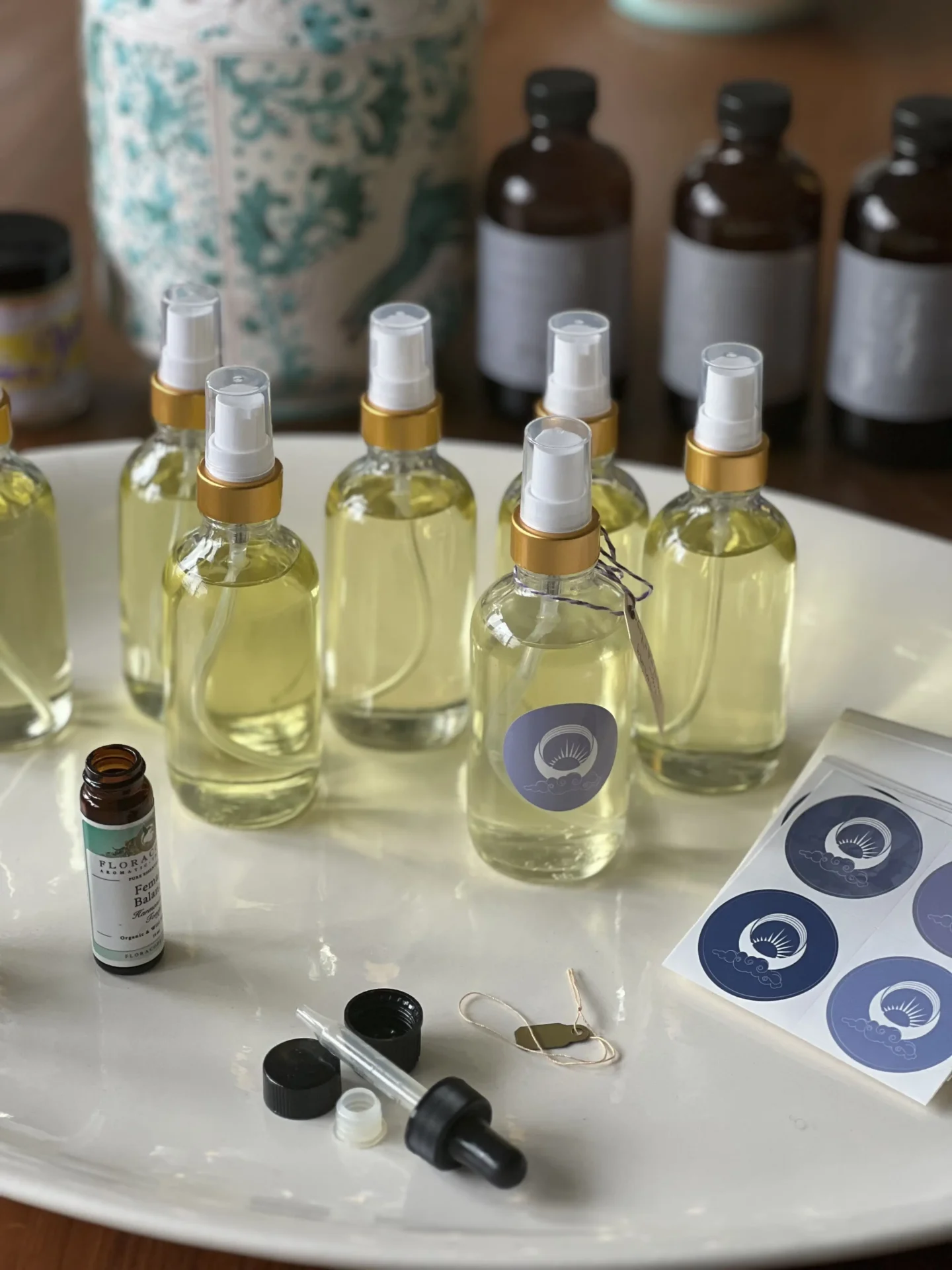Nurturing the Beginning of Life
For a Peaceful + Loving World
12 Guiding Principles
As a mom and prenatal yoga teacher I wrote the 12 Guiding Principles out of a desire to share what I have learned through my many years of teaching and studying yoga and Pre and Perinatal Psychology and Health, and to include it in my Yoga for Motherhood ™ classes and training. This work originally comes from Wendy McCarty and Marti Glenn and their work in Pre and Perinatal Psychology and Health, a field of study showing that our earliest relationship experiences have a profound impact on our life.
Over the years it has been wonderful to discover that almost everyone is interested in learning what babies experience and how that impacts their life and this eventually leads them towards their own curiosity about their earliest experiences. This guide is intended to help moms, parents and yoga teachers in their own healing process and with their role in creating children who will thrive and become peaceful, resilient, and loving human beings.
1. Life Begins
You grow and develop as a human being from a small cell or “spark of life” into a fully grown human being over a period of time. In this process of development, the time from preconception through the first year of life is called the primal period. It is when your deepest patterns are formed, or life’s impressions are made upon you. Those patterns form at the physical, emotional, mental, spiritual and relational aspects of yourself and play out in your relationships with others.
2. Patterns are formed
What you experience at the very beginning of life (the primal period) gives you an initial imprint or pattern as to how you will perceive and behave in the world, what you believe and how you will relate to yourself and others.
You can understand this in an experiential way when you make the comment, “she was always like that, even as a baby”. What is there in the beginning initiates lifelong ways of being.
These initial impressions shape who you are and can help you to view the world as a place of fear and hatred or love and trust.
3. Life is a Continuum
Once you are born you continue to grow and develop. This development outside the womb is a continuum of what was experienced and the patterns that were set during pregnancy and your birth experience.
The ideal foundations for our growth and resiliency, including brain development, emotional intelligence, and self-regulation are based upon optimal conditions that begin during the primal period, which is the period of: preconception, conception, pregnancy, birth and the first year of life.
The ideal foundations for secure attachment and healthy relationships are predicated upon optimal relationships during the primal period of preconception, conception, pregnancy, the birth experience and the first year of life.
4. Growing + Becoming Whole
You are sensitive, conscious and aware and have possessed a sense of Self since your early primary period.
Seeking ever increasing states of wholeness, connection and happiness you are living your life with an innate drive towards the fullness of human potential.
When you were a baby you perceived, communicated and learned in ways that intertwined the relationships between your body, mind, heart, soul and ways of being.
5. Relationships
You developed in the womb within the context of relationships. What these relationships were like profoundly affected the quality and structure of every aspect of your development.
From the beginning of your life, you experienced and internalized what your mother felt and experienced. Your father or partner’s relationship with your mom and you were integral in creating an ideal environment in which you could grow and thrive.
All relationships and encounters that your mom, you, your dad/partner had during this primary period affected the quality of your life and your initial experiences. Supportive, loving and healthy relationships helped to give you the best start and environment to meet your full potential.
6. Getting Your Needs Met
You have an innate need for belonging, feeling secure, being loved and nurtured, wanted, valued and seen as the Self that you and have been since the very beginning of your life. When these needs are met you are provided with the right environment for optimal development.
7. Communication
As a baby you are constantly communicating and seeking connection. When you are responded to in ways that honor your multifaceted ways of communicating, then you are living in an optimal environment for development and wholeness.
8. Mother + Baby are interconnected
As a baby you and your mother are interconnected. Respect for this mother-baby bond during pregnancy, birth and infancy is of highest priority.
9. Birth + Bonding
As a baby, your birth and the bond between your mother and father/partner is critically important because it forms core patterns of behavior that have life-long effects.
When moms feel supported and empowered and the natural process of birth is allowed to unfold with minimal intervention and there is no separation between you (the baby) and your mom, then the very best outcomes occur. Both for you and your mom. If there is separation, then staying connected and in contact with your father is vital.
As a newborn, when you are communicated to directly and the relationship with your mother is undisturbed, then the process of birth supports your ability to thrive and integrate the series of events that took place for your birth.
10. Healing: ourselves + our families
Being able to resolve past or current conflicts, stress or any issues that affect the quality of life for all family members is of highest priority. When you do this before pregnancy you have a better chance at ideal experiences and birth outcomes. When needed, seeking therapeutic support as early as possible during the primal period is recommended.
11. Patterns that hurt
When unresolved issues remain or less than optimal conditions and experiences occur during the primal period then life diminishing patterns often underlay aspects of our life. These include health issues, stress behaviors, difficulty in self-regulation, attachment, learning and more.
12. Loving Support
Any early diminishing patterns (such as stated above) embed below the conscious mind and become part of our subconscious with physical implications. Professionals, trained in prenatal and perinatal psychology, can identify these patterns and support babies, children, parents and adults to heal and shift these primary patterns to more life-enhancing ones at any age.
When we, as parents, heal ourselves by transforming early life patterns then our children will benefit at any age.
In closing~
My goal was to rewrite the original work in everyday language so that moms, parents and yoga teachers could use it in practical and immediate ways. Taking what we can, when we can, and growing from there. In the process of writing my own version I have been humbled by the breadth of knowledge that the authors penned. It was not always comfortable for me to “write in my own words” what I was only beginning to understand. Sometimes fear came up, and my own sadness, plus wondering about all that was in me that I had yet to discover. Ultimately, I feel both hopeful and inspired and ready to do my own work that is needed to heal and to continue to share what I have gleaned with others.
Bibliography:
Castellino, Ray. (2000). The stress matrix: Implications for prenatal and birth therapy. Journal of Prenatal & Perinatal Psychology & Health 15 (1) 31-62.
McCarty, W.A. & Glenn, M., et.al. (2008, 2016, 2019).
Nurturing human potential and optimizing relationships from the beginning of life: 12 guiding principles from prenatal and perinatal psychology. [Brochure]. Natural Family Living~Right From the Start: Santa Barbara, CA. Retrieved (date you downloaded the file) from https://12guidingprinciples-ppn.com/brochures
Siegal, D. (2012). The developing mind, 2nd ed: How relationships and the brain interact to shape who we are. New York, NY: Guildford Press.
Wilks, J. Ed. (2017). An integrative approach to treating babies and children: A multidisciplinary approach. Philadelphia, PA and London, England: Singing Dragon. Chapter 7.







